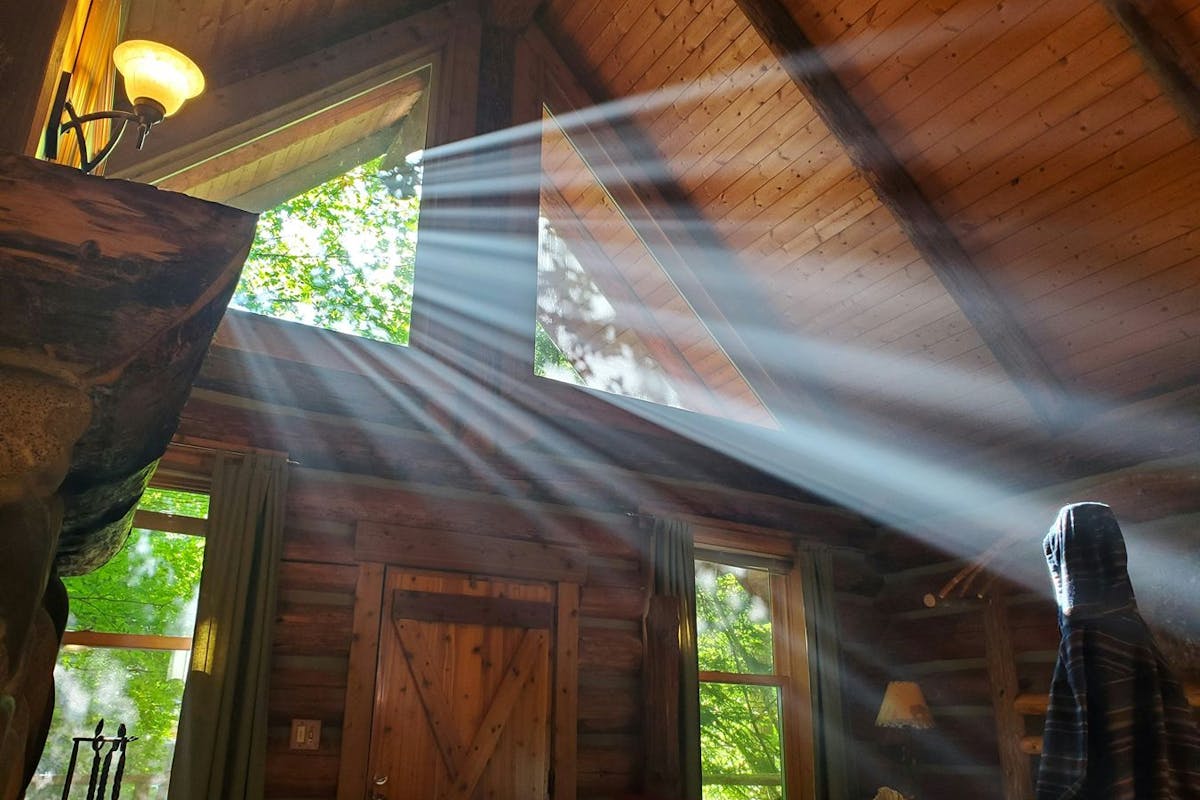Infrared Heaters for Home Heating
Last edited

Author
Andrew Giermak
Solar and Electrification Writer and Editor

Editor
Andrew Blok
Electrification and Solar Writer and Editor

More people are looking at, and using, far infrared heaters in their homes. These heating panels use safe electromagnetic waves to heat objects, walls, furniture, and people. This can be more comfortable and efficient than heating the air in a space until it reaches the temperature you want, like traditional space heaters or furnaces.
We’ll explore possible uses, plus the pros and cons of far infrared heaters for your home heating.
See how much you can save with home energy changes
What is far infrared heating?
Far infrared (FIR) heaters use electric resistance to emit radiant heat in electromagnetic waves. Radiant heat heats objects, including people, directly rather than heating the air in a space.
FIR heaters are typically panels mounted on a wall or ceiling.The panels stay relatively cooler, about 175-220 F when on. A ceramic electric space heater gets up to 380 F. An exposed coil on an electric radiant heater gets from 800-1,500 F.
Far infrared heating is becoming more efficient and users like the aesthetics of thin panels, the zoned functionality, and improved comfort. FIR heaters are generally a better fit for smaller, but frequently used, spaces in a home or a temporary need for heat rather than 24-7-365 heating. Patio heating, heated mirrors or floors in bathrooms, and space heaters are some other popular uses.
In your home, the US Department of Energy says using an infrared radiant heater is most energy and cost efficient when you want to heat one room or space for a few hours or less.
How a far infrared heater works
Far infrared heating works as a heating panel, element, or film (most often in heated floors) emit electromagnetic waves and radiation. (Don’t worry. It’s safe.) The waves heat objects, including people and water.
Infrared heating works the same way the sun warms everything on Earth. It’s also highly efficient and comfortable. You can experience infrared heat on a sunny but mild day. Stay in the shade for a minute, then step into bright, direct sunlight and feel the change in warmth. You nearly instantly feel warmer, even though the air temperature difference between the shade and sunlight isn’t that large.
The same tech is used for safe, precise heat in products like incubators, saunas, and physiotherapy devices.
See how much you can save with home energy changes
The pros and cons of far infrared heaters
Far infrared heaters have a number of advantages which are growing as the technology improves. There are also drawbacks to keep in mind, especially pertaining to using infrared heaters as your primary heating system.
Pros of far infrared heating for your home
Far infrared heating achieves the best cost efficiency as it lets users feel warmer and more comfortable with a lower air temperature (and thermostat setting). FIR heaters can effectively give you zoned heating by being used only where you need heat in a particular place.
FIR heaters give heat almost instantly. They can be a good health choice as they don’t change humidity levels or blow dust around your indoor air. Far infrared heaters are safer than other forms of electric resistance space heaters, as they are a safer temperature when operating, a lower fire risk, and, if mounted, less of a risk of being knocked over.
The ideal circumstances for using far infrared heating, especially as a primary heating system, are newer, well-insulated homes with no ductwork or previous heating system installed, smaller homes, and homes in a climate with no need for a larger, central heating system.
Potential drawbacks with far infrared heaters
Far infrared heaters, like all electric resistance heaters, are 100% efficient at converting electricity into heat energy. This means their coefficient of performance (COP) is 1.0 or very close to 1.0, but its max is 1.0.
By comparison, heat pumps move existing heat from one place to another rather than generate it. Air-source heat pumps typically range from a COP of 2.0-4.0, while efficient geothermal or ductless mini-split heat pumps can achieve COP ratios above 5.0.
The upfront and installation cost of far infrared heating, especially if you’re planning to make it your primary, whole-home heating system, can be too expensive. For full coverage, you'll need multiple panels and professional electrical installation.
It may be necessary to add circuits to the home's electrical panel to safely support the total power draw. Additional construction work, such as work to subfloors for floor heating, may add substantially to the project cost.
A complete system for a home can range from $5,000-$20,000 or more for wall or ceiling panels, and up to $36,000 or more for FIR floor heating. A FIR patio heater costs from about $60-$800.
To get the most efficient heat and save the most energy, the placement and design of the panels is important. Panels need clear lines to what you expect them to heat. Furniture, walls, or appliances in the way will absorb the heat before it reaches you. Infrared heat can create ambient heat in the walls, floors, and surfaces of a room, but this won’t be as effective as direct heat.
| Far infrared heater benefits | Far infrared heater drawbacks |
|---|---|
| Instant heat | Upfront and installation cost |
| Cost efficient for smaller and periodic heating needs | More expensive for larger, ongoing heating needs |
| Safe, very little burn or fire risk | Need specific design/layout for best coverage |
| Zoned heating | |
| Good for indoor air quality |
Infrared heaters and saving money
When you need heat in a limited space for limited periods of time, far infrared heaters could be the best and most cost-effective way to get your heating job done. Heat on demand without turning up the thermostat for your whole home may well be a plus for comfort and savings.
Setting up a patio infrared heater, using infrared heat in a basement or garage, running a far infrared heater when you’re the only one in the house, or turning one on briefly first thing on a chilly morning all sound like good home additions.
You can find more ways to save money by saving energy, while making your home an even better version of itself, with the new Palmetto app or by going to our Savings Maximizer page.
See what home electrification can do for you:
Frequently asked questions
Could I heat my whole home with far infrared heaters?
You can heat a home with far infrared heaters. Whether this is your most energy-efficient or cost-effective, choice is another question. Panels for supplemental heat in your living room or bedroom may make sense while going to far infrared heating and ditching your heat pump or furnace in a Minnesota winter may not.
Are infrared heaters a safety risk?
Far infrared heaters should be installed by a professional electrician. Proper installation is critical to safety and functionality. You should keep the recommended clearance around the heating panel, too.
How do infrared patio heaters work?
Infrared patio heaters are effective and efficient because they use radiant heat, which heats objects, including people, within the range of the heater, as opposed to the air which is particularly inefficient when you’re outside. Infrared heaters also provide heat nearly instantaneously.
Do infrared heaters affect air quality?
Far infrared heaters are very clean and don’t negatively affect air quality or affect humidity.


